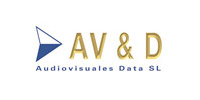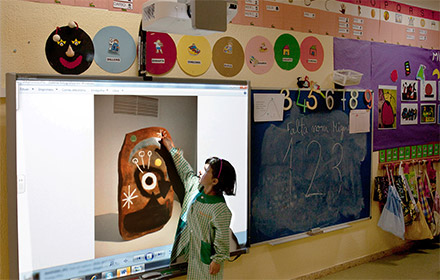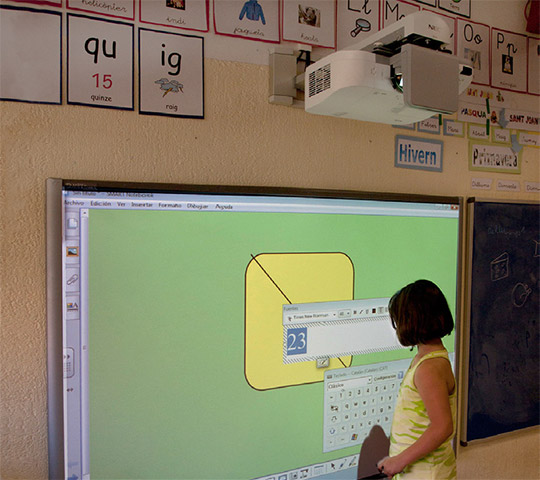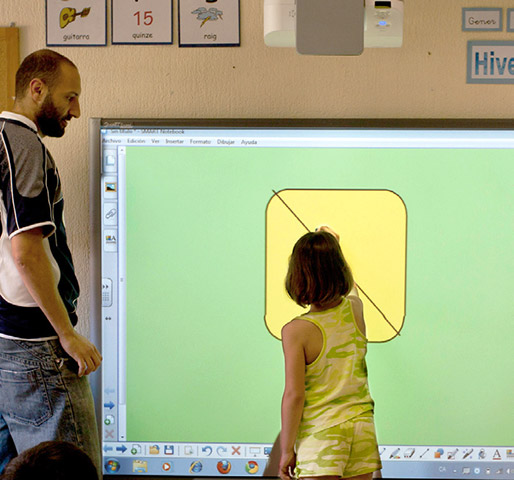
 Download PDF
Download PDF
English |
pdf | 838.3 KB
|
NEC Display Solutions Client Installation Education JACINT VERDAGUER SCHOOLUPGRADING TO INTERACTIVE DIGITAL LEARNING METHODSWith whiteboards already existing, the Jacint Verdaguer School, teaching students from kindergarten to primary level (ages 3 to 12 years), invested in new 3D capable NEC projectors within 13 of its classrooms. The pioneering school recognised significant benefits for the children in enhancing their learning capacity through the latest interactive techniques. The Jacint Verdaguer school located in the Catalan locality of Casteldefells was one of the pioneering schools in Spain to opt for the digitalisation of its classrooms, having installed the first interactive digital whiteboards in their classrooms eight years ago. “Eight years ago we already had the vision that education always follows society and we acknowledged that technology must be integrated into our educational methods”, says Francesc Morilla, coordinator of Learning and Knowledge Technologies (TAC) at Jacint Verdaguer. “This is why we went from having the technology (the computer) in a corner of the classroom to integrating all technology throughout the classroom. The whiteboards we installed eight years ago were the beginning of the change from traditional education, later came the laptops and now the projectors and the tablets (one tablet per student)“. 
The ChallengeThe benefits of technological solutions to aid learning in schools have been proven in numerous reports and professional studies. Recently, a pilot initiative carried out at the Ludwig Maximilian University in Munich and at the University of Applied Science in Düsseldorf demonstrated the positive results following new participatory learning methods integrating diverse technologies, such as laptops and tablets, projectors and multi-touch screens. NEC has carried out a study to determine the influence of three-dimensional reproduction in classrooms, with the conclusion that 92% of the students showed more interest in the classroom when 3D digital content was shown. When it came to adding new tools to offer even greater interactivity and full compatibility with the existing equipment at Jacint Verdaguer school, the school’s management decided in favour of NEC projectors with 3D. The installation was executed by Audiovisuales Data, NEC’s solutions partner for educational environments, who con!rmed the current high level of interest in these new teaching solutions. “When a centre installs, for example, three whiteboards and three projectors, by the next academic year it has to install them in half the college, because the students who have already experienced the new techniques refuse to go back to the old ways.” says Carlos Rivero Alloza of Audiovisuales Data, who has already distributed “thousands” of projectors in educational centres in Catalonia. “Once this technology is installed in the classroom you cannot go back, when the students leave school they will be surrounded by technology, so they have to learn to manage it”. “Without having seen it, it might be difficult to imagine what this means to the children”, remembers Francesc Morilla. “Everything starts like a game, the first time they are introduced to a digital classroom, motivation is extreme. Later you have to tone it down and make them understand that this is learning and not entertainment. Over the years, being in a digital classroom will not have any impact on them, they have understood that it is just another tool”. 
Among the benefits of this way of learning, Morilla identi!es that the interchange with students from other countries, the research of content on the Internet, the access from home for homework by means of the educative platform and the organisation of content have all enhanced the learning process. “We have witnessed that the methodological change of the digitalisation of the classroom improves the educational results”, he concludes. The NEC SolutionExperiencing some problems with existing equipment including distractions caused by shadow, alongside the centre management’s desire to embrace the bene!ts of greater interactivity in the classroom, gave them the drive to invest in the renewal of their equipment. “The existing projectors were creating some service problems”, says Carlos Rivero. “The school wanted something that was more innovative and intuitive for the teachers, as well as removing some issues with shadows. Above all, they were looking for a better resolution, improved brightness and capacity to work in 3D, plus improved reliability with an extended guarantee that includes the change of lamp”. The representatives of Audiovisuales Data visited the Jacint Verdaguer personally to familiarise themselves on-site with their requirements and to introduce the NEC equipment. “We left them some projectors for several months so they could try them out”, remembers Carlos Rivero. “For an education centre, this equipment is a significant investment so giving them hands on experience to test the functions and robustness was crucial in the sales process.” 
The ResultThe bene!ts were experienced from day one. “The installation took place during the summer, so when the new academic year started, the teachers thought that they had a new whiteboard”, remembers Francesc Morilla. “The whiteboard was the same, but the difference in quality and luminosity from the NEC projector made them believe that all the devices had been replaced”. Federico Haba, Head of Display Solutions of NEC Ibérica said, “the knowledge of the subjects is better in 3D classes and it also helps to reduce the time for the students to learn new concepts. Investigations show that the use of 3D in education offers more commitment and achievement among the students and the teaching staff. These days, our children are already familiar with 3D reality, and now the technology is available to introduce this reality to classrooms. Schools equipped with the required infrastructure, by means of digital whiteboards, projectors or televisions with 3D reproduction, will notice that in a short time they will make studying easier for their students and improve their attention in class”. |